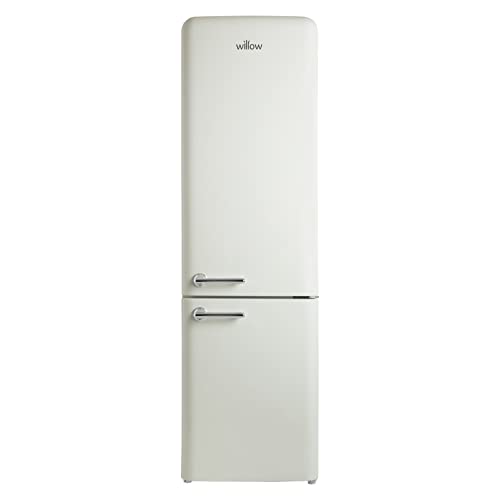
Fridge Freezer Sale
Add a review FollowOverview
-
Founded Date December 14, 2006
-
Sectors Garments
-
Posted Jobs 0
-
Viewed 8
Company Description
How Fridges Propelled To The Top Trend On Social Media

The Comprehensive Guide to Refrigerators: Types, Features, and Maintenance
Fridges, typically referred to as fridges, play a critical role in contemporary families by preserving food, lessening waste, and keeping a comfortable living environment. These necessary cooking area home appliances have actually progressed considerably over the years in regards to technology, performance, and style. This article intends to supply a detailed introduction of the numerous kinds of fridges, their features, and tips for upkeep, making it an essential resource for homeowners.
Kinds of Refrigerators
Fridges are available in various designs and setups, each dealing with various requirements and choices. Below is an introduction of the most common types of fridges offered on the marketplace today.
| Type of Refrigerator | Description |
|---|---|
| Top-Freezer | This is the traditional fridge style where the freezer compartment is located on top. It is generally the most economical choice, making it popular for budget-conscious consumers. |
| Bottom-Freezer | In this design, the freezer is located at the bottom, permitting easy access to fresh items at eye level. This type typically includes pull-out drawers for much easier company. |
| Side-by-Side | This design has the freezer and refrigerator compartments organized vertically beside each other. It supplies easy access to both sections and typically includes water and ice dispensers. |
| French Door | Integrating the benefits of a bottom-freezer design with large doors on the refrigerator section, French door fridges provide adequate space and flexibility, making them ideal for big households. |
| Compact | Likewise called mini-fridges, these smaller sized units are perfect for dorm rooms, workplaces, or as secondary fridges in homes. They have limited storage however are energy-efficient. |
| Smart Refrigerators | Equipped with clever technology, these fridges offer functions such as touch screens, internet connection, and app controls. They can offer alerts for expired food and other wise performances. |
Key Features to Consider
When selecting a refrigerator, it is vital to consider different functions that can improve usability and effectiveness. Here are some essential functions to try to find:
-
Energy Efficiency
- Search for designs with an Energy Star score to guarantee energy efficiency and lowered utility expenses.
-
Storage Options
- Adjustable shelves, door bins, and specific compartments for vegetables and fruits improve the versatility of storage.
-
Water and Ice Dispensers
- Numerous side-by-side and French door models come with built-in water and ice dispensers, providing convenience and Frydge encouraging hydration.
-
Temperature Control
- Precise temperature control enables property owners to set ideal conditions for various food products.
-
Smart Features
- Functions like touchscreen user interfaces, Wi-Fi connection, and integrated cams to assist handle grocery stocks make smart fridges attractive.
-
Sound Levels
- Consider designs with low functional sound, specifically if the kitchen is open to the living location.
Upkeep Tips for Refrigerators
Proper maintenance can lengthen the life of a refrigerator and ensure optimal performance. Here are some beneficial upkeep pointers:
-
Regular Cleaning:
- Clean the interior and outside surface areas of the fridge with mild soap and water at least once a month.
- Get rid of spills immediately to avoid smells and bacteria development.
-
Temperature level Settings:
- Maintain your refrigerator at a temperature level in between 35 ° F to 38 ° F and the freezer at 0 ° F for optimum food preservation.
-
Check Door Seals:
- Inspect the door seals periodically for fractures or tears. A defective seal can result in energy loss and increased electrical energy costs.
-
Defrost Regularly:
- For manual defrost designs, thaw the freezer when ice develops to minimize the device’s work.
-
Condenser Coils:
- Clean the condenser coils at the back or below the refrigerator every six months to enhance effectiveness.
-
Keep it Level:
- Ensure the refrigerator is level for proper door positioning and to avoid vibrations.
Frequently Asked Questions (FAQs)
1. How long should a refrigerator last?Generally, a refrigerator can last anywhere from 10 to 20 years, depending on the brand name and upkeep practices.
2. How can I enhance the energy performance of my refrigerator?To improve energy efficiency, keep the fridge’s temperature level settings optimum, frequently tidy the condenser coils, and avoid positioning hot food inside.
3. What kind of refrigerator is best for little cooking areas?Compact or counter-depth designs are perfect for little cooking areas as they supply ample storage without occupying too much space.
4. Are clever refrigerators worth the investment?Smart refrigerators can be worth the investment if you value benefit and innovation. They use functionalities like stock management and remote gain access to, which cater to tech-savvy users.
5. How can I troubleshoot a refrigerator that is not cooling appropriately?Start by inspecting the temperature level settings, making sure the condenser coils are tidy, and validating that the door seals are intact. If these do not solve the problem, consider calling an expert service technician.
In conclusion, fridges are vital devices that play an important role in protecting food and preserving a healthy way of life. With a range of types and functions available, it is essential for consumers to select a design that aligns with their specific needs. By understanding the choices and sticking to maintenance best practices, property owners can delight in the advantages of their refrigerators for numerous years to come.

